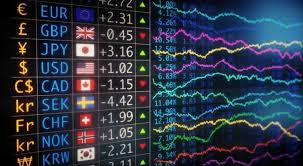
Mastering Day Trading in Forex: A Comprehensive Guide
Day trading in forex is a thrilling and potentially lucrative endeavor that attracts many traders seeking to leverage their skills in the global currency markets. But before diving into this fast-paced world, it is essential to understand the fundamentals of trading, develop effective strategies, and implement robust risk management practices. In this article, we’ll explore the essential components of day trading in forex, and you can also check out the day trading in forex Best Cambodian Brokers to find the right platform for your trading journey.
Understanding Day Trading
Day trading refers to the buying and selling of financial instruments within the same trading day. The goal is to capitalize on short-term price movements, often making multiple trades throughout the day. Unlike long-term investors, day traders do not hold positions overnight, which helps minimize the risks associated with overnight market fluctuations.
Why Trade Forex?
The foreign exchange market (Forex) is one of the largest and most liquid financial markets in the world. With trillions of dollars traded every day, it offers numerous opportunities for traders to profit from currency fluctuations. Several advantages of day trading in forex include:
- High Liquidity: The forex market operates 24 hours a day, and its high liquidity ensures that traders can enter and exit positions with minimal slippage.
- Low Barriers to Entry: Beginning in forex trading typically requires a smaller initial investment compared to other markets like stocks.
- Availability of Leverage: Forex brokers often provide leverage, allowing traders to control larger positions with a smaller amount of capital.
- Diverse Trading Strategies: Traders can choose from various strategies such as scalping, trend following, or range trading based on their risk tolerance and market analysis.
Essential Tools for Day Trading

To succeed in day trading, traders must equip themselves with the right tools and resources. Here are some foundational tools every day trader should consider:
- Trading Platform: A reliable trading platform is essential for executing trades efficiently and accessing market data. Look for platforms that offer advanced charting tools, technical indicators, and user-friendly interfaces.
- Market News and Analysis: Staying informed about economic indicators and market news is crucial. Various websites and apps provide real-time news updates, economic calendars, and market analysis.
- Technical Analysis Tools: As day traders often rely on charts and price patterns, having tools for technical analysis, such as historical price data and various indicators (e.g., RSI, MACD), is essential.
- Risk Management Tools: Tools like stop-loss and take-profit orders enable traders to manage risk effectively and protect their capital.
Developing a Trading Strategy
One of the keys to success in day trading is having a well-defined trading strategy. Here are some popular strategies that day traders employ:
1. Scalping
Scalping involves making numerous trades throughout the day to capture small price movements. Traders often hold positions for just a few seconds to a few minutes, aiming for small profits that accumulate over time.
2. Momentum Trading
Momentum traders focus on currencies that are trending strongly in one direction. They look for signs of continued momentum, such as increasing volume or news catalysts that could sustain the trend.

3. Range Trading
This strategy involves identifying currency pairs that are trading within a defined range. Traders buy near the support level and sell near the resistance level, making profits on price oscillations.
4. Breakout Trading
Breakout traders look for currencies that have broken through key support or resistance levels. The idea is that once a currency breaks out, it will continue to move in that direction for a sustained period.
Risk Management
One of the most critical aspects of day trading is effective risk management. Here are some essential practices:
- Set Stop-Loss Orders: Always use stop-loss orders to minimize potential losses. Determine your risk tolerance and set stop-loss levels accordingly.
- Trade with a Plan: Avoid making impulsive decisions. Have a clear plan for every trade, including entry, exit, and risk management strategies.
- Limit Leverage: While leverage can amplify profits, it also magnifies losses. Use it wisely, and don’t risk more than you can afford to lose.
- Keep Emotions in Check: Emotional decision-making can lead to mistakes. Stick to your trading plan and avoid revenge trading following losses.
Conclusion
Day trading in forex can offer exciting opportunities for traders willing to put in the time to learn and develop their skills. With the right tools, a solid trading strategy, and effective risk management practices, you can navigate the fast-paced world of forex trading successfully. Remember that there is no one-size-fits-all approach; you need to find the style and strategy that suit you best. And as you embark on your trading journey, consider finding a reputable broker to facilitate your trades efficiently or perhaps explore Best Cambodian Brokers to kickstart your forex trading adventures.


 Entries (RSS)
Entries (RSS)